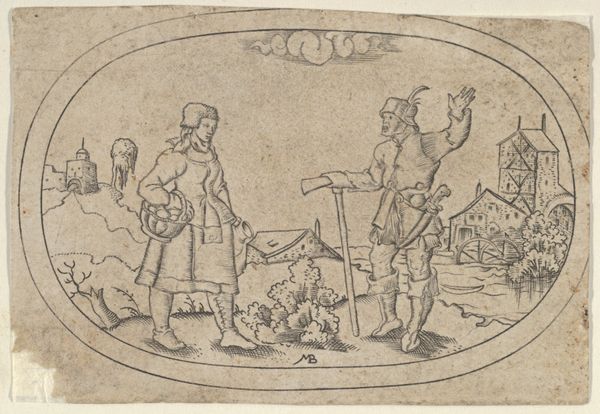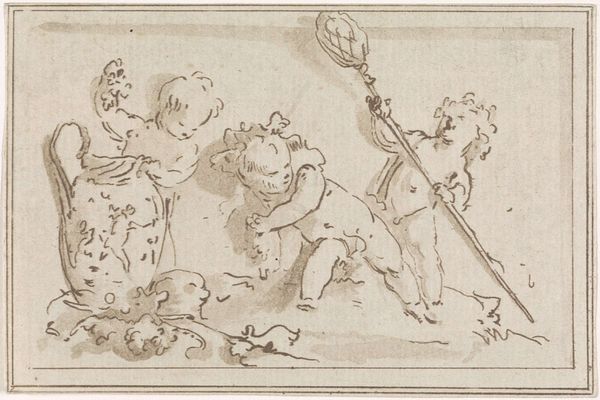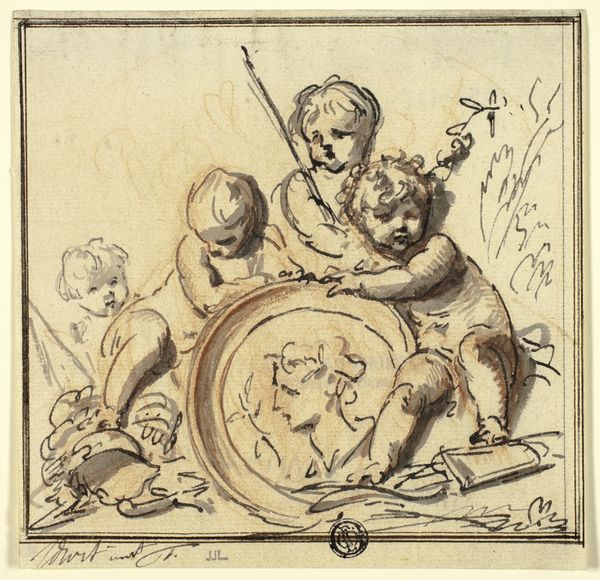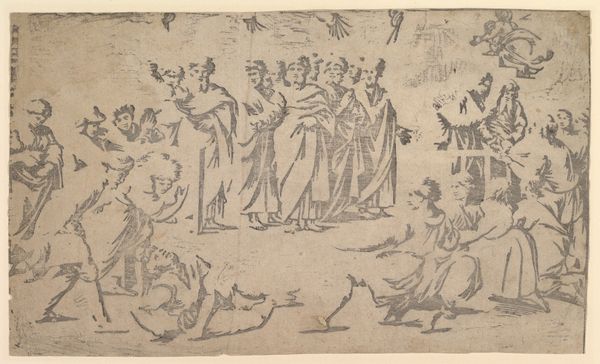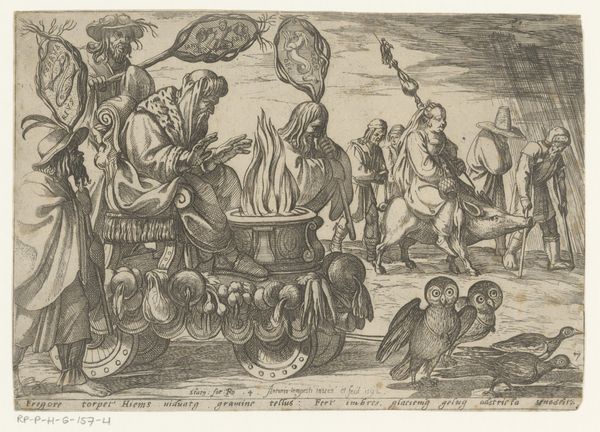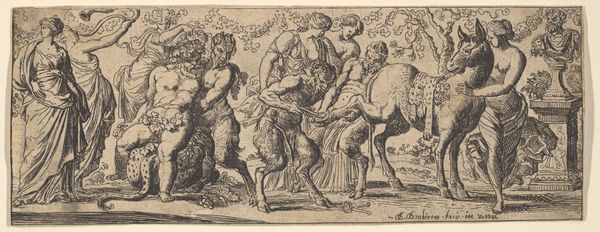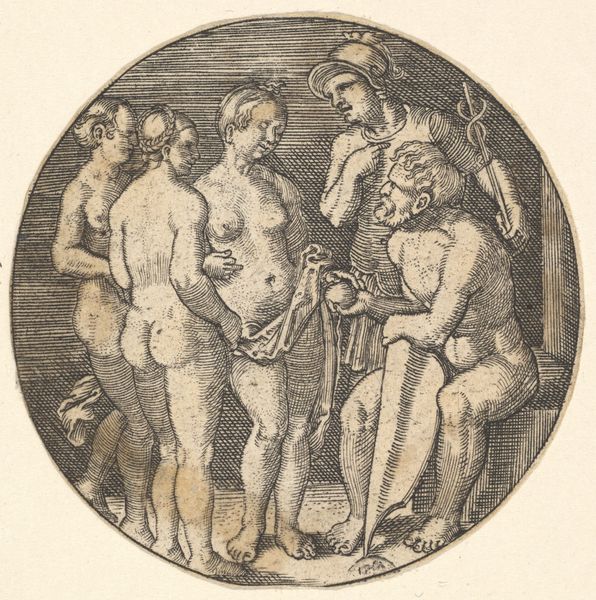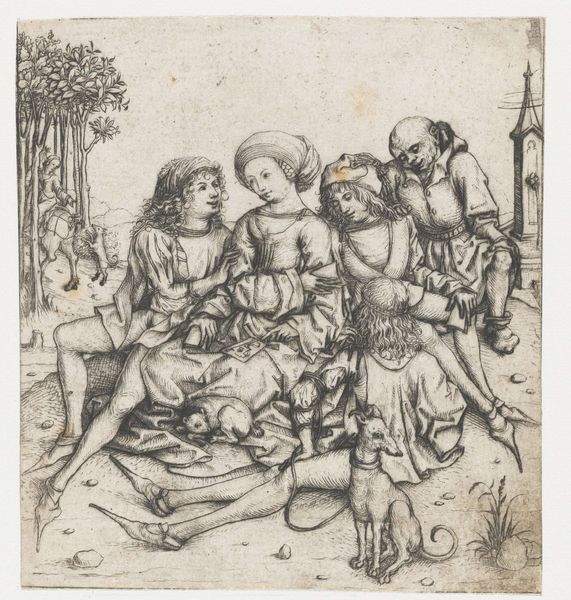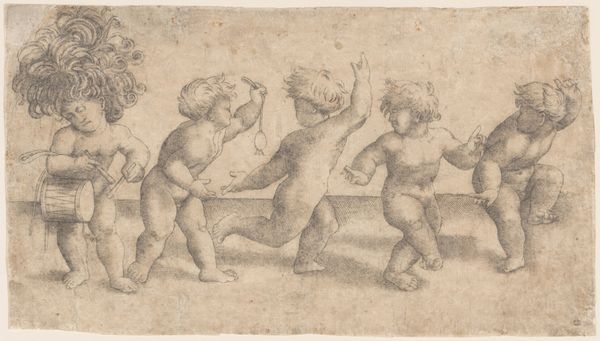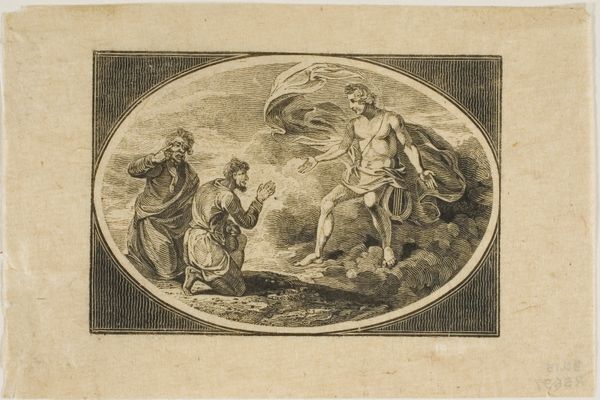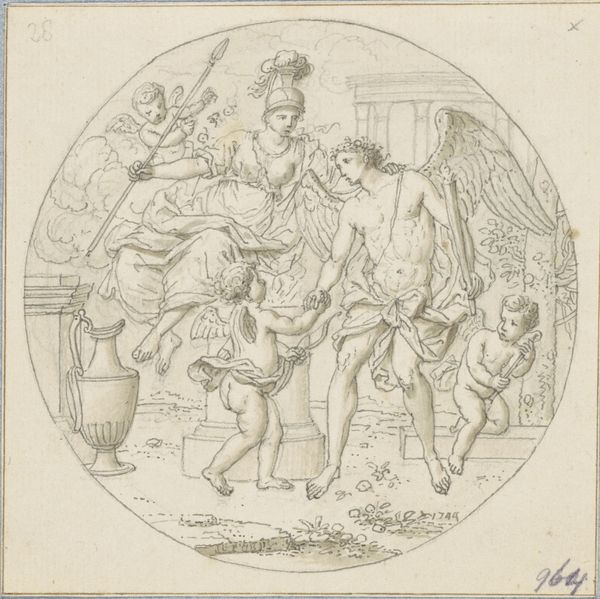
drawing, print, engraving
#
drawing
#
allegory
# print
#
landscape
#
figuration
#
11_renaissance
#
northern-renaissance
#
engraving
Dimensions: Sheet: 2 3/8 × 3 3/8 in. (6.1 × 8.6 cm)
Copyright: Public Domain
Mathais Beitler made this delicate engraving of four putti, or cherubs, sometime around 1600. It's printed on paper, a relatively new and increasingly affordable material at the time. Engraving is an intaglio process. The artist uses a tool called a burin to cut lines into a metal plate, often copper. Ink is then applied to the plate, filling the incised lines, and the surface is wiped clean. When paper is pressed against the plate, the ink transfers, creating the image. Beitler has used this laborious method to create fine lines and subtle shading. The print is from a series called "Das Bossenbüchlein," or "The Little Book of Grotesques," which speaks to its original function: providing pattern for other artists. The putti, with their chubby bodies and playful poses, would have been models for painters and sculptors. They populate paintings, furniture, and decorative objects. Prints like these were essential to the workshops of the period, spreading artistic ideas and influencing tastes. This simple print reveals the intricate relationship between art, craft, and the emerging market for images in the early modern period.
Comments
No comments
Be the first to comment and join the conversation on the ultimate creative platform.
